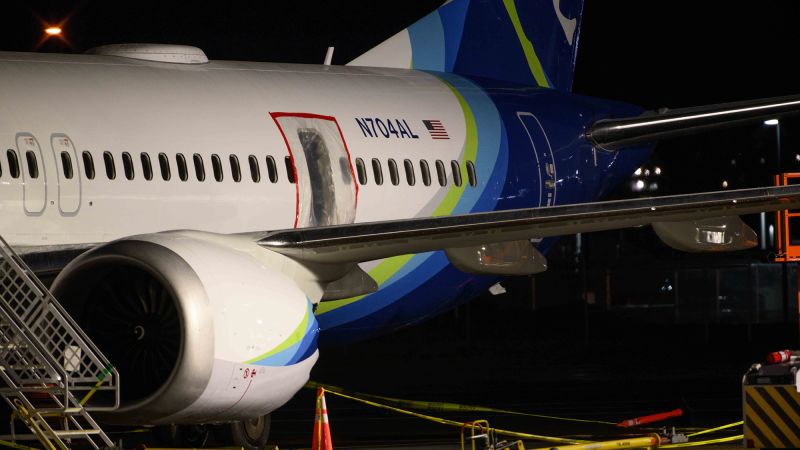On January 5, Alaska Airlines Flight 1282 experienced a terrifying incident shortly after takeoff, when a door plug blew off, leaving a hole on the side of the aircraft. First Officer Emily Wiprud initially thought people had been killed, but it was quickly determined that all passengers and crew were safe. The crew was able to confirm that all 177 individuals on board were accounted for, relieving Wiprud of her initial fears. She was in shock but thankful that everyone was safe.
Federal investigations later revealed that Boeing had delivered the 737 Max plane to Alaska Airlines without four bolts designed to hold the door plug in place. Wiprud, from the flight deck, felt an explosion in her ears, a rush of air, and a loud bang. The noise from the air whooshing through the plane was deafening, and she found herself without her headset as the cabin depressurized. Despite the chaos, Wiprud managed to help safely land the plane, and fortunately, no one was seriously injured in the incident.
Months after the incident, many questions remain unanswered, such as how the 737 Max was delivered to Alaska Airlines without the necessary bolts. The incident dealt a significant blow to Boeing’s reputation for safety and quality, leading to the replacement of its CEO and the appointment of a court monitor to oversee its compliance with federal safety standards. The impact of the incident has raised concerns about the safety and integrity of Boeing’s aircrafts, prompting further scrutiny and investigations to prevent similar incidents in the future.
The initial shock and confusion during the incident highlight the importance of quick thinking and effective communication among the flight crew. Wiprud’s decisive actions and calm demeanor in the face of adversity played a crucial role in ensuring the safety of all those on board. The incident serves as a sobering reminder of the potential risks and vulnerabilities in air travel, prompting a closer examination of safety protocols and maintenance procedures to prevent similar incidents from occurring again.
The aftermath of the incident has sparked a wave of reforms and improvements within Boeing to address safety and quality concerns. The company’s commitment to stricter compliance with safety standards and regulatory guidelines is essential for rebuilding trust and confidence among passengers and stakeholders. The incident underscores the need for continued vigilance and transparency in the aviation industry, as the safety and well-being of passengers remain a top priority for airlines and manufacturers.
In conclusion, the incident on Alaska Airlines Flight 1282 serves as a wake-up call for the aviation industry to prioritize safety and quality assurance in all aspects of aircraft operations. The repercussions of the incident have led to significant changes within Boeing and heightened awareness of the potential risks associated with air travel. As the industry continues to evolve and adapt to new challenges, the lessons learned from this incident will shape future safety protocols and regulatory measures to ensure the well-being of passengers and the integrity of air travel.


